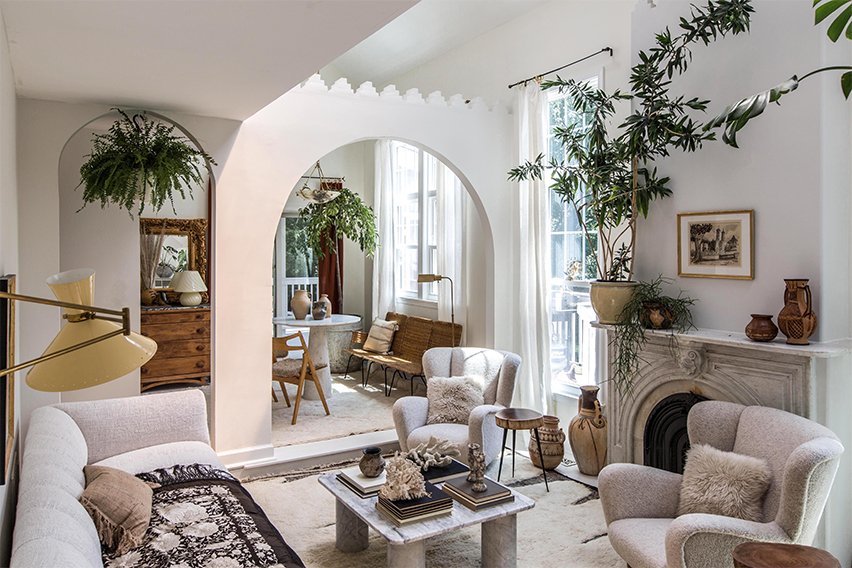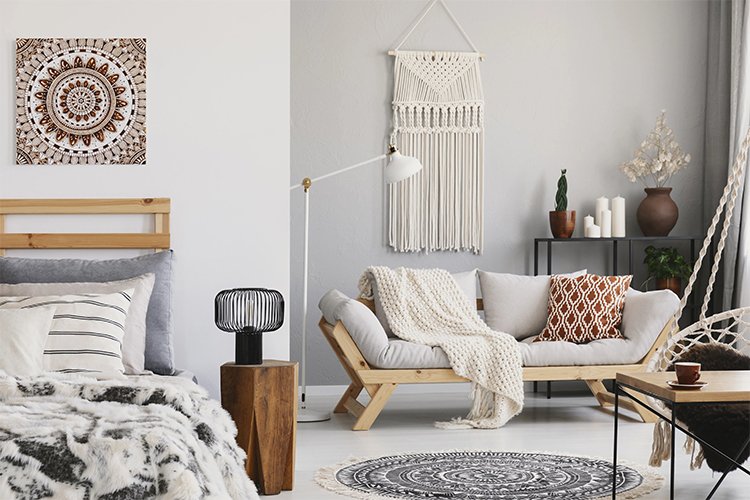
Decorating a small space can be a challenging task, but with the right techniques and ideas, it can also be an enjoyable and rewarding process. Whether you’re living in a studio apartment, a tiny house, or just have limited space in your home, there are several ways to make the most out of your small space. In this article, we’ll share some tips and tricks on how to decorate a small space.
Before you start decorating, it’s essential to have a plan in mind. Consider the function of the space, the items you want to include, and the overall style you want to achieve. It’s also helpful to measure the space and create a floor plan to ensure that everything fits and flows well.

In a small space, every inch counts, so it’s important to choose furniture pieces that serve multiple purposes. For example, a sofa bed can be a comfortable place to lounge during the day and a cozy place to sleep at night. An ottoman with storage can serve as a footrest, extra seating, and a place to store blankets and pillows.
Using light colors on walls, furniture, and decor can help make a small space feel larger and more open. Neutral shades like white, beige, and light gray can create a bright and airy atmosphere. Adding mirrors can also help reflect light and give the illusion of more space.
Clutter can make a small space feel even smaller, so it’s important to keep things organized. Use storage solutions like baskets, shelves, and drawers to keep items out of sight and create a clean and tidy space. It’s also helpful to get rid of any items you don’t need or use regularly to free up space.
When you’re working with limited floor space, it’s essential to use vertical space as much as possible. Hang shelves or floating cabinets on the walls to store items and display decor. Use a tall bookcase to maximize storage space without taking up too much floor space.
In a small space, it’s easy for everything to blend together and feel monotone. Adding texture to your decor can create visual interest and make the space feel more dynamic. Consider using textiles like throw pillows, blankets, and rugs to add texture and color to the space.

In a small space, less is often more. It’s important not to overcrowd the space with too many items or decor pieces. Stick to a few key pieces and keep the overall design simple and streamlined.
Natural light can make a small space feel brighter and more open. Keep windows unobstructed to allow as much natural light in as possible. If you don’t have access to natural light, consider using artificial light sources like lamps to create a warm and inviting atmosphere.
A statement piece can add personality and style to a small space. Consider adding a bold piece of art or a unique piece of furniture to draw attention and create a focal point. However, be careful not to overcrowd the space with too many statement pieces.
In a small space, it’s important to maximize storage wherever possible. Consider using hidden storage solutions like built-in cabinets, drawers under the bed, or storage ottomans. This will help keep the space organized and clutter-free.
Plants can add life and freshness to a small space. Consider adding small plants on shelves or hanging plants from the ceiling to create a natural and relaxing atmosphere. Just be sure to choose plants that thrive in low-light conditions if your space doesn’t receive much natural light.
Hanging curtains close to the ceiling can create the illusion of higher ceilings and make a small space feel more open. Choose light and airy curtains to allow natural light to filter through and create a soft and inviting atmosphere.

Creating distinct zones within a small space can help define different areas and make the space feel more functional. For example, use a rug or piece of furniture to separate the living area from the dining area. This will create a sense of organization and flow within the space.
Furniture with exposed legs can create the illusion of more space by allowing light to filter through and giving the impression of more floor space. Consider choosing a sofa or chair with exposed legs to create a lighter and more open feel.
Hanging art strategically can create the illusion of more space and add visual interest to a small space. Consider hanging art in unexpected places, like above the bed or in the bathroom, to draw the eye up and create a sense of depth.
Small-scale furniture can help make a small space feel more proportionate and functional. Consider choosing a loveseat instead of a full-size sofa or a bistro table instead of a large dining table. This will create a sense of balance within the space and make it feel more inviting.
While it’s important to create a sense of openness and flow in a small space, it’s also important to make it feel cozy and inviting. Consider adding soft and plush textiles, like throw pillows and blankets, to create a warm and comfortable feel. Use warm and neutral colors to create a relaxing and soothing atmosphere.
In conclusion, decorating a small space requires careful planning and creativity, but with the right ideas and techniques, it can be a fun and rewarding process. By using statement pieces, hidden storage, plants, high-hanging curtains, creating zones, furniture with exposed legs, adding lighting, strategic art, small-scale furniture, and keeping it cozy, you can create a beautiful and functional space that feels larger than it is. Remember to stay focused, take your time, and have fun with the process!